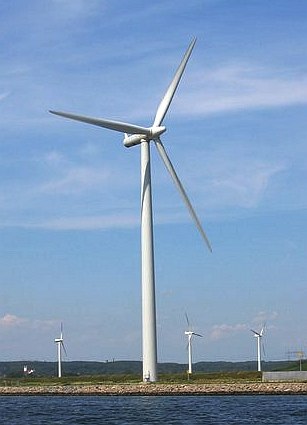Nuclear power is obtained by forcing a nuclear reaction to happen, normally nuclear fission, so that the resulting heat can be transferred to water, which in turn will evaporate and move turbines and so on.

Due to the nature of nuclear power it actually produces little waste and is a reliable energy source, however, the waste it does produce is extremely toxic, so much in fact that it must be sealed and buried so that no one will come in contact with it until the radiation disappears entirely.
There's also the problem that if the nuclear power plant is not properly taken care of, it might blow up, releasing a great amount of radioactivity that could endanger many people.
Still, future designs for reactors may actually reduce waste almost entirely, and an incident like the one mentioned above has only happened once, in a power plant (Chernobyl) with safety conditions too poor to be allowed today.

In addition, there has been hopes to build a nuclear power plant that uses nuclear fusion instead of fission, with many scientists agreeing that it would be safer than fission. The main problem besides developing the technology is obtaining the rare materials that can be used in the reaction, but it still remains an increasingly real alternative.
In short, nuclear power is a source of energy that carries risks, but that promises enough energy to make it worth the trouble of minimizing the risks.
Information and pictures from:
http://en.wikipedia.org/wiki/Nuclear_power#Flexibility_of_nuclear_power_plants
http://en.wikipedia.org/wiki/Chernobyl_disaster#Planning_the_test_of_the_safety_device
http://home.clara.net/darvill/altenerg/nuclear.htm














